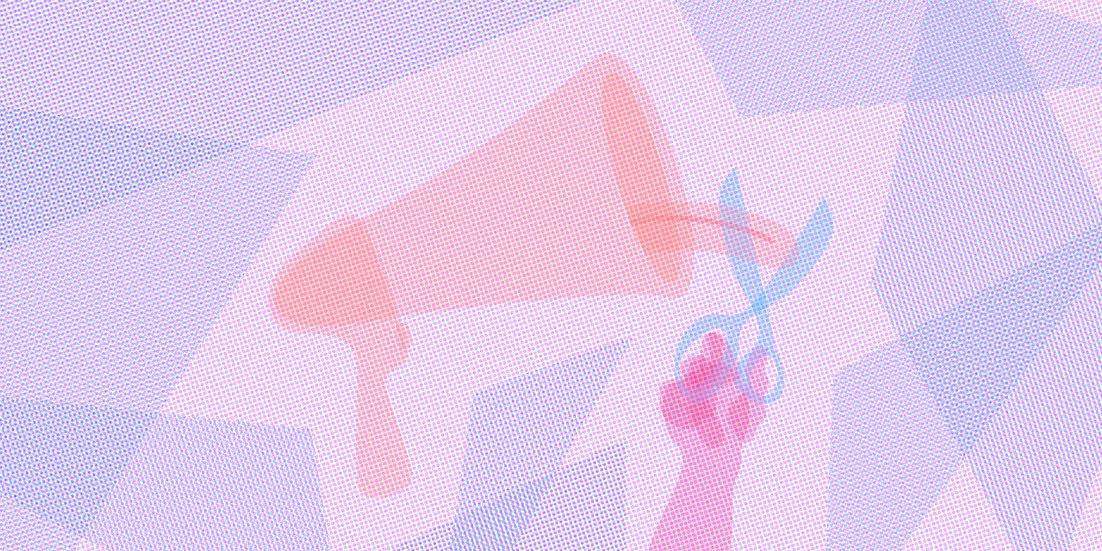The Unvoiced: Lesbian and Bisexual Latinas

Illustration by Haysol Chung
The biggest reason why I have found it so difficult to come out to my peers and to my families is because of unwelcoming comments. My sexuality is constantly questioned and stigmatized to the point that some people do not believe that it can be real. I have been asked if I am “half lesbian” or if I’m “still into girls,” as though my identity as a bisexual woman is temporary or not valid.
Being a bisexual or homosexual woman who feels that they must remain closeted in order to avoid uncomfortable circumstances can be tough, especially when you feel like you have nobody to talk to about your sexuality. Friends who will listen to your everyday, casual problems are valuable, but sometimes a woman needs a support system for problems much deeper than that.
Homosexuality and bisexuality among women of color are not too often spoken about. Feeling secluded, and being unable to relate to those around you may cause you to repress certain aspects of your identity. I am personally continually learning about myself and about ways to express my sexuality in an assertive yet modest manner, because that is what I feel comfortable with. However, this can be challenging when I have no one around me to relate to. Everyone needs a support system to which they can rely on for empathy and compassion, and that is why safe spaces are crucial to the well-being of these women.
Bisexual or homosexual woman of color undergo different experiences from bisexual or homosexual white woman. For instance, growing up in a traditional, old-fashioned Mexican household, women are oftentimes expected to eventually marry a hardworking husband, and any future that deviates from that is not spoken about. Many first-generation Mexican individuals come from families who hold strong beliefs about gender roles: men are expected to be the chivalrous breadwinners of the family, and women are expected to maintain the household as tidy as possible and to cook for the family. Conversations about sexuality are not often welcomed, which can bring discomfort to homosexual or bisexual women when asked about dating boys. In my experience, traditional households are very heteronormative, and although some households are much more strict about gender roles than others, lesbian or bisexual women may feel isolated in any case, as they may feel their sexuality is not accepted.
Growing up identifying with the LGBTQ community, underrepresented individuals often find themselves questioning their feelings, emotions, and sexual attractions, especially when they find that the media, academic discourse, and households are highly heteronormative and highly anglo. This can cause Latinas to suppress their sexuality if they start to internalize stigmas associated with being homosexual, bisexual, or transgender.
In an attempt to shed light on the importance of safe spaces and representation in the LGBTQ community for lesbian and bisexual women, I spoke with a friend of mine, Zaira, who identifies as a queer Latina. Zaira states that she began to feel comfortable with her sexuality beginning in middle school, when she met a classmate who allowed her to open up about her sexuality. Prior to speaking about the way she felt with a friend, Zaira tried to suppress any queer feelings and emotions, which is unhealthy for someone’s mentality, especially at a young age. Zaira even states that she tried dating a guy in high school to show her mother and her classmates that she was “normal.” When I brought up her unique experience as a Latina, she expressed how she, as a homosexual woman, felt rejected by her mother due to her traditional morals. She stated that her mother threatened to kick her out of her house if she did not “straighten up.” We spoke about how Mexican parents often times hold a stigma against homoesexuals or “jotos” (a derogatory term for homosexuals) which can take a toll on the way that homosexual individuals come out to their parents. Zaira and I also spoke about how old-fashioned Latino parents question where LGBTQ individuals learn their behavior since they expect their children to be products of their morals without any outside influence. A child of old-fashioned parents who comes out as homosexual or bisexual is almost parallel to jabbing their pride and traditions.
Since gaining confidence in expressing her sexuality, she has become more involved in the LGBTQ community, although she still finds it difficult to relate to other LGBTQ youth since she, as a Latina, is underrepresented.
It is crucial that homosexual and bisexual women of color feel included and are represented in LGBTQ discourse. Representation has everything to do with feeling comfortable opening up about one’s sexuality. Homosexual or bisexual women who feel as though they are not welcome to proudly speak about their experience will live with the reality of having to hide her entire identity. Mainstream media oftentimes ignores intersectionalities, therefore safe spaces for homosexual and bisexual women of color to openly converse about their experiences contribute to the first step in feeling comfortable with one’s identity.
One of Zaira’s statements that stood out to me was, “I need to talk to gay women who identify with my culture and who are not above me in society’s hierarchy of privilege.” In stating that, Zaira acknowledges that being a non-white queer woman is a different experience than being a white queer woman, which is an intersectionality that needs to be spoken about. UCLA’s LGBT Resource Center offers support and counseling to any LGBTQ individuals who feel they need to talk about their experiences. Moreover, the Center will hold a Queer Femmes of Color Meet and Greet which is exciting progress for the inclusion of LGBTQ people of color. More information can be acquired through UCLA’s LGBT Campus Resource Center found in SAC.




